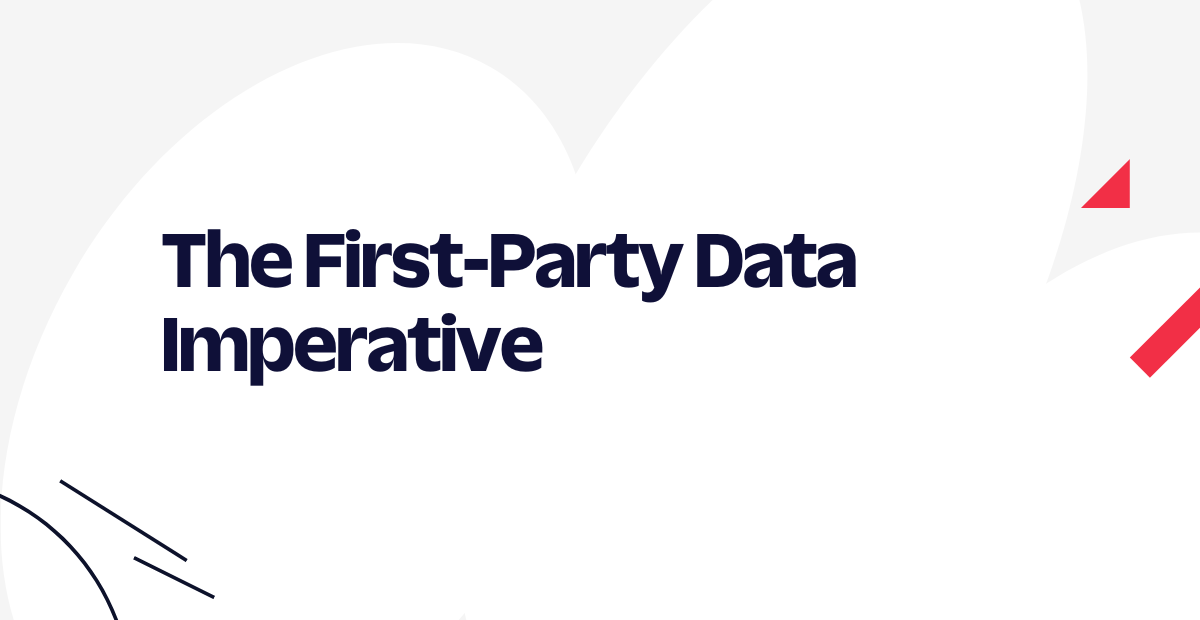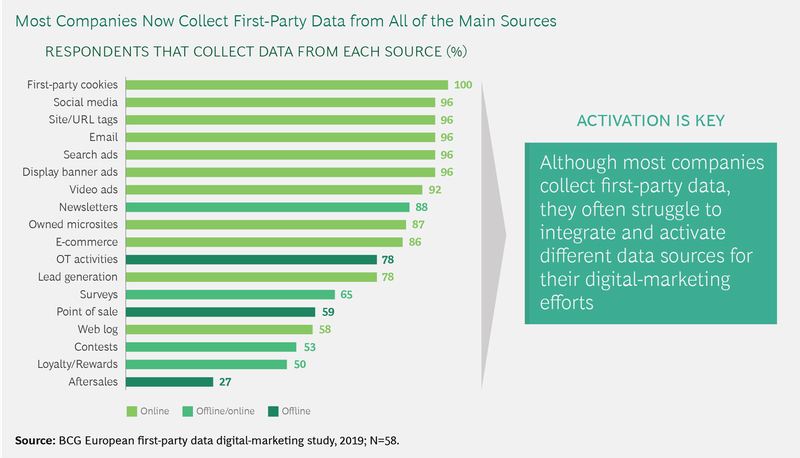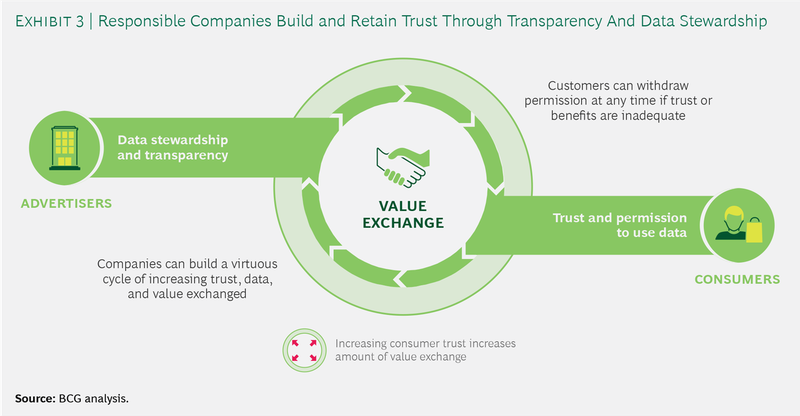The First-Party Data Imperative
Time to read:
This post is part of Twilio’s archive and may contain outdated information. We’re always building something new, so be sure to check out our latest posts for the most up-to-date insights.

Third-party cookies and third-party data—the enablers of those sneaker ads stalking you around the web after you searched for a new pair —are on the way out. Browsers like Chrome and government regulations such as the GDPR are limiting their use, clearing the way for first-party data—the type that delivers you spot-on recommendations at companies like Amazon and Netflix.
Nobody's sure what a world without third-party data will look like, as browser updates and privacy laws aren't finalized yet. But everyone agrees on one thing: First-party data is businesses' new best friend.
First-, second-, and third-party data—what's the difference?
The difference between first-, second-, and third-party data is its source. As a general rule, the closer you are to the data's collection, the higher its quality.
- First-party data is collected directly by your company.
- Second-party data is collected by another company and shared with, or sold to, a non-competitive partner.
- Third-party data is collected by a data-collection company and then shared with anyone who wants to purchase it.
As an example, let's track the transformation of a prospect's email address from first- to second- to third-party data.
When someone subscribes to your newsletter, their email address is first-party data for you.
If a business partner gets this email address from you, then they've acquired a piece of second-party data.
Now, if either you or your partner sells the email to a data-collection agency, it becomes third-party data for anyone buying it from that company.
This journey from first- to second- to third-party data is not unique to email addresses. These transactions happen with many types of digital data, like phone numbers, postal codes, browsing history, IP numbers, and even mobile location data. Data brokers usually collect such information through online campaigns, research companies, technology providers, affiliate networks, analytical solutions, and social media plugins.
Regardless of the type of data, as time passes between collecting and using customer data, the chance of that data becoming outdated increases. And since you can act on your own data quickly, first-party data always has a higher chance of being relevant and correct than second- or third-party data.

The benefits of first-party data for marketers
Research by Gartner shows wasted marketing spend, inaccurate targeting, and lost customers are marketers’ biggest headaches because of poor data quality. The antidote is first-party data, which 61 percent described as of "excellent" quality, a label only 26 percent and 17 percent reserve for their second and third-party data. When combined with a Customer Data Platform (CDP), marketers can reap the benefits of your first-party data.

First-party data delivers accurate and relevant communications
With a CDP, you can capture actual customer behavior in real-time on your own channels like web, mobile, and in-store. This data allows you to refine your customer profiles, segment them more granularly, and then act with truly personalized ads, messages, and offers. None of that is possible with second- or third-party data, as it might lack details or become outdated by the time you can work with it.
Delivering such personalization pays off. A 2020 study from the Boston Consulting Group—commissioned by Google—found that “companies that link all of their first-party data sources can generate double the incremental revenue from a single ad placement, communication, or outreach, and 1.5 times the improvement in cost efficiency over companies with limited data integration.”
First-party data enables automated personalization
When you collect and organize your first-party data with a Customer Data Platform (CDP), you can automatically create and synchronize audiences based on customers' actions and preferences. You can then use this information to personalize the customer experience across channels for each user.
Correct personalization builds trust, as your customers feel you understand them and their needs. According to the 2019 Edelman Trust Barometer Special Report, 81 percent of consumers said they need to trust a brand to buy from them, while 63 percent of respondents told Redpoint Global they “expect personalization as a standard of service.”
You can't achieve such personalization with second-and third-party data running through suboptimal infrastructure. Under such circumstances, you lack the required level of detail on your customers' actions to define real-time, relevant triggers. Personalization based on such data either isn't truly personal, arrives too late, or doesn't happen at all.
For example, marketers might have to manually upload customer data into advertising platforms to create targeted audiences. This approach causes a significant delay between collecting and using the data, and such manual processes also introduce opportunities for mistakes, data leaks, and other compliance issues.

You can't achieve such personalization with second-and third-party data running through suboptimal infrastructure. Under such circumstances, you lack the required level of detail on your customers' actions to define real-time, relevant triggers. Personalization based on such data either isn't truly personal, arrives too late, or doesn't happen at all.
For example, marketers might have to manually upload customer data into advertising platforms to create targeted audiences. This approach causes a significant delay between collecting and using the data, and such manual processes also introduce opportunities for mistakes, data leaks, and other compliance issues.
First-party data gives a complete view of customer activity
Most companies have access to a wealth of sources for collecting first-party data like eCommerce transactions, loyalty programs, website activity, and after-sales communication. All this first-party data can provide an accurate, well-rounded view of each customer. When you rely mostly on second- or third-party data, you don't have such a variety of information on every customer.
Sadly, nine out of ten marketers said first-party data is important to their marketing programs, but less than a third can access and integrate data across channels. The data exists somewhere in their company, but they lack the technical capabilities to use it for building a complete picture of each customer.

Instead, they rely on a partial view, created from data breadcrumbs coming from isolated interactions, perhaps combined with second-and third-party data. They don't know that device ID 6954 is already a customer or that desktop user X is the same person as mobile user Y. They can't work with the first-party data their company already collects, like information from points of sale or customer support operations. This situation leads to untargeted, often irrelevant marketing initiatives that eat up budget without much ROI to show for it.
When you have data management tools to collect, clean, and consolidate your first-party data, you get a complete view of every customer interaction across all your channels and properties.
A CDP breaks down data silos between product, marketing, and customer support teams by collecting, cleaning, and consolidating a company's first-party data. It provides a complete view of every customer interaction across all channels and platforms.
Maximize the value of your first-party data with a CDP
First-party data provides businesses with an opportunity to improve the customer experience and profits. It's a two-way value exchange: The company can deliver a better customer experience and more effective marketing while the customer receives relevant information, assistance, and offers.
Businesses can only achieve this ideal state if they manage the complex tasks of collecting, organizing, and acting on their customer information—activities that are perfect for a CDP to take on.

Related Posts
Related Resources
Twilio Docs
From APIs to SDKs to sample apps
API reference documentation, SDKs, helper libraries, quickstarts, and tutorials for your language and platform.
Resource Center
The latest ebooks, industry reports, and webinars
Learn from customer engagement experts to improve your own communication.
Ahoy
Twilio's developer community hub
Best practices, code samples, and inspiration to build communications and digital engagement experiences.


